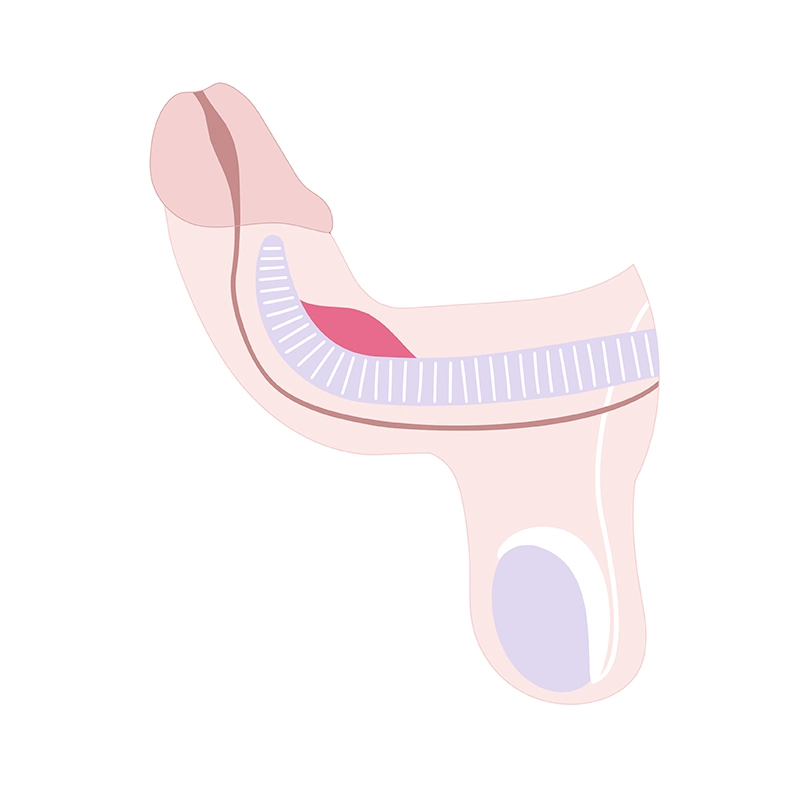What is Peyronie's disease?
Peyronie’s disease is a disorder in which scar tissue, called fibrous plaque, forms in the penis. The plaque accumulates, specifically, in a thick, elastic membrane called the tunica albuginea, which surrounds the corpora cavernosa of the penis, the structures that during erection fill with blood upon sexual arousal and make the penis rigid. To understand the mechanism that generates this fibrous plaque enveloping the corpus cavernosum, we can imagine what would happen if we add a strip of zeal around a sausage-shaped balloon and try to inflate it (it will deform and bend).
As the plaque enlarges, the penis curves or bends, which can cause painful erections (in the first few months, although later the pain tends to disappear spontaneously, but the curvature does not). The curvature in the penis can make sexual intercourse painful, difficult or impossible. Peyronie’s disease begins with inflammatory changes and may develop into a fully calcified lesion. In addition, some men with Peyronie’s disease may have erectile dysfunction.
This disease produces, like all the unknown, a great emotional alteration of the patient: the anatomy of the penis is altered, the quality of sexual intercourse deteriorates, the perception of one’s own corporeality is disturbed and, consequently, anxiety, anguish, depression…

IT IS NOT A CONTAGIOUS DISEASE NOR IS IT CAUSED BY ANY KNOWN COMMUNICABLE DISEASE. IT IS NOT THE PATIENT'S FAULT. AND IT HAS SOLUTIONS. IT IS IMPORTANT THAT IT BE TREATED BY A UROLOGIST WITH EXPERIENCE IN THIS PROBLEM.



